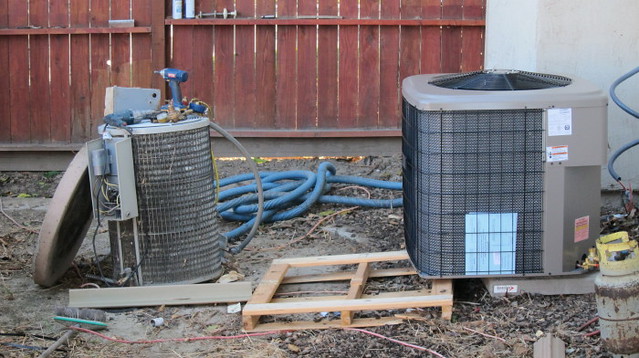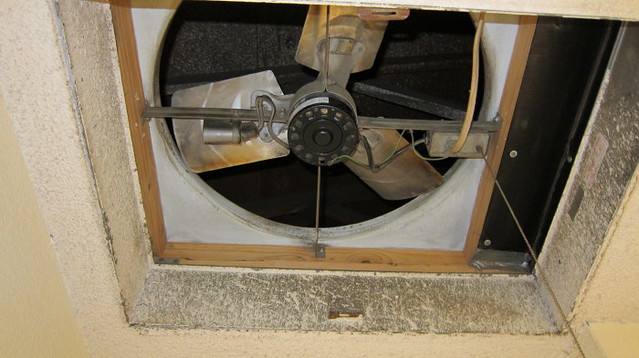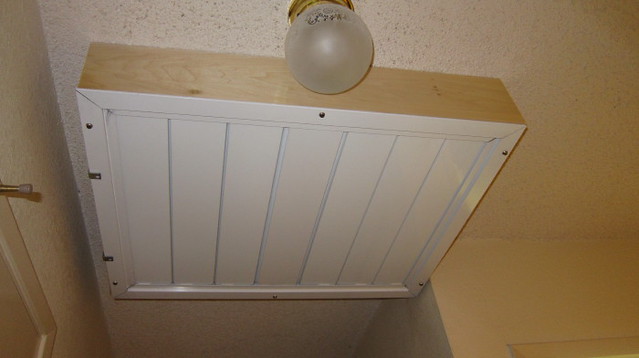Update - it's installed and cooling!
I think you will really like the variable speed fan and the two stage AC. I'm amazed at how closely my system keeps the temperature to the set point and how well the AC dehumidifies.
Yep. Got it installed yesterday, weather was pretty mild. Today it got hot, but not crazy hot, and humidity was mild, (near 90 F, but only 50-60% humidity, but sunny, and very little west shade on our house).
So the install went well. A truck showed up early and (gently!) dropped off everything in the driveway so it was ready - the installers (two young guys that seemed well versed in everything they had to do) got here at the prescribed time, and we walked through everything, and they got to work. I did some prep, cut back some bushes where they had to run the lines to the compressor (we moved it from where it was - more on that later), and cleared out my projects in the basement so they could get the furnace and water heater in/out easily. They said (and I was pre-warned) that it might go into Saturday, so they planned to hold off on the water heater install, and let that roll into Saturday if needed. But they got it all done in one long day - they were here from 7:30 AM to ~ 7 PM, and kept busy the whole time (they had pizza delivered ~ 4PM).
I even threw in a change on them (after the old AC was pulled out, we rethought about where we wanted the PVC in/out for the furnace positioned). No problem, they checked it out, said they could do it (it was more work for them), and they got it done. Everything was done neatly, no short cuts that I could see. And yes, I'm pretty picky, though I will give pros a little slack in that they have to get a job done and get out- a DIY can have flexibility to stretch things out over a few days (weeks, months, years? in my case) if needed.
The big surprise - after they unpacked the AC compressor - that thing was HUGE! The brochure never shows it with anything to compare it to. Our old one was probably below waist level height, this thing is the almost the size of a refrigerator (about shoulder height)! Actually 37" wide, 24" deep, and 53" high. It's a monster. I'm so glad we decided to have it moved around the side of the house, off the garage. I was a little concerned, as moving it puts it closer to the neighbors, but when it was started to test it, I couldn't believe how quiet it was. I thought, and verified today, if I'm 10 feet away from it, the neighbor's AC is about the same volume as this thing. I was in the back yard today when it started, and I didn't even notice. No, no problem for the neighbors.
I got a chance to peer inside it today through the grill vents - it's almost empty! The motor/compressor look to be smaller than a couple one gallon paint cans. A lot of empty space, but all the perimeter is taken up with the coils which have what looks like aluminum 'hairs' to distribute the heat - looks kind of like shiny Christmas tree garland. I guess that is what is needed for the high efficiency. And a large fan on top (but the motor is just 1/5 HP).
I knew they said I needed a new high-tech thermostat to take advantage of all the features, and they upgraded me to the full wi-fi enabled version. I started to have second thoughts about all this when I saw all the complexity of this thermostat - a bunch of set up options (they did that though), and so many options. But the basics are pretty easy. And after I had a chance to get familiar with it, I realized that there isn't much extra hardware in all this. But having a 2 stage AC (not sure if that even involves extra valves or anything - maybe just a low -power mode?), and a variable speed blower, plus a humidity sensor opens up a LOT of control possibilities. So really, the complexity is in the thermostat controller, I think. If that is reliable (a Trane XL850 with Nexia apps).
Sooooo, I started it up ~ 11AM today, as it reached ~ 78-79 inside. It ran for about an hour to bring it down to the 76 setting. And the 'intelligence' became obvious right away. The default humidity target is ~ 45-55%, so it ran at the stage 1 mode and with a 45% blower speed to bring down the humidity. After about an hour, it decided to go to stage 2 to get the house to target temperature. After that, the cycles were more like 10 minutes on, 15-20 minutes off. Sometimes, it ran at 65% blower (I guess it decided humidity was close enough, and prioritized cooling?). I noticed the variable speed fan would run a few minutes at a very slow speed at the end of the cycle to squeak out the last bit of cooling from that coil.
So with this running almost always at stage 1 mode, and at a reasonable duty cycle, it looks like I will have the reserve I hoped for for the really hot days, when we inevitably have a large group over.
Bottom line - it really performed as I had hoped, and quieter than I expected. Got the humidity down. I later selected 'circulate' mode for the fan, which will run the fan for a minimum of 30 minutes out of an hour, to help keep the upstairs cool. I might just set the fan 'ON" for tonight. I have no measured yet, but I understand the VS fans take very little power in these circulate modes.
Time will tell, but I think these things
could be as reliable as the old units. Variable speed motors are established technology. Devil's in the details.
So far, very happy. Again, I really was going for comfort, but that required the features in the high efficiency units. That added dollars, but the various rebates and tax credits look like they keep the payback to ~ 4 years. Not bad (if it is reliable).
Oh, the water heater has a power damper on it, that qualified it for a credit, and probably makes sense to reduce air infiltration.
OK ERD50- If you don;t mind, can you say what tonnage, and approximate costs?
Thanks!
The AC is 4 ton (old unit was 3.7 ton, but probably never ran optimally), and in stage 1 is 2.8 ton (70%).
I'm almost afraid to post the price

This install was moving the compressor ~ 50 feet (closer to electrical source, so that was no issue, but lots of refrigerant lines to run, and a somewhat complicated run - through the basement, crawl, out the wall, over and around the side of the house), PVC in/out vents added, old stuff removed, some duct adaptations. New humidifier and smart thermostat. Lots of details that they handled very well. High eff, 2 stage furnace with VS fan, new water heater.
OK, $10,000 ( they took my 2% rewards AMEX though). Yep, that's a lot. Should get a $500 tax credit. Yes, big bucks, but this was a big job, and everyone seemed very professional. Hopefully, I feel the same a few years down the road.
Just started playing with the connected apps. DW is already tired of hearing me talk about reported duty cycles, fan speeds, and humidity targets

But she said she is very comfortable, so that's good.
Any other questions?

-ERD50




